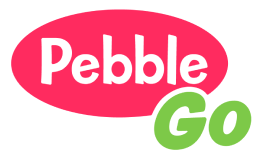Ideas and Inspiration
Using PebbleGo Without 1:1 Devices: Smart Small Group Strategies for Educators and Librarians
Published April 7, 2025
@image /content/dam/pebblegodev/blog/using-pebblego-without-1-1-devices.png two kids playing on a computer
As budgets tighten, some school districts are scaling back their 1:1 Chromebook programs. While that can feel like a step backward, it’s actually a great opportunity to rethink how we use tech in more meaningful, collaborative ways. If you’re an educator or librarian working with limited devices, PebbleGo is still totally doable—and super effective—with small groups.
@h5 PebbleGo Works Even Without 1:1
PebbleGo was built with young learners in mind, and that means it’s flexible. Whether you're exploring animals, biographies, science, or social studies, each student doesn’t need a device in front of them to dive into research. With just a few tablets or computers, you can keep students engaged.
@image /content/dam/pebblegodev/blog/kids-around-laptop.svg A group of kids looking at a computer
@h5 5 Ways to Use PebbleGo in Small Groups
[b]1. Rotating Research Stations[/b]
Set up PebbleGo as one of your stations. While one group uses it to research a topic, other groups can be reading, writing, drawing, or working on a hands-on activity. Rotate every 15–20 minutes to keep things moving and engaging.
[b]2. Guided Inquiry Time[/b]
Pull a small group together and research a topic together on one device. Use the read-aloud feature to support your emerging readers or multilingual learners. Model how to find facts, make connections, and ask follow-up questions.
[b]3. Partner Projects[/b]
Have students work in pairs to explore a topic on PebbleGo, then create something together—a short presentation, a poster, a mini-book, or even a recorded video. It’s a fun way to blend tech with collaboration and creativity.
[b]4. Library Learning Centers[/b]
Set up themed stations in the library. For example, a “Weather” station might include nonfiction books, a puzzle or sorting activity, and a PebbleGo station where students read about [url=https://shell.pebblego.com/modules/2/categories/2977]Extreme Weather.[/url]
[b]5. Read-Aloud Extensions[/b]
After a read-aloud in class or the library, head to PebbleGo for a deeper dive. If you’ve just read a story about penguins, go explore the [url=https://shell.pebblego.com/modules/1/categories/16]penguin category[/url] together and find fun facts to add to your classroom anchor chart or writing journals.
[b]Tips for Using PebbleGo Smoothly in Small Groups[/b]
* Headphones (and even headphone splitters) can make it easier for multiple students to listen in [b]together[/b].
* Use [b]graphic organizers[/b] to help kids collect and organize their research—these can be printed or used digitally.
* Bookmark specific PebbleGo articles ahead of time so students can get to them quickly. Remember to use the [b]Copy Link[/b] button in your settings menu to drop the exact article into a shared doc, slide, or QR code for instant access.
* The [b] Random Article button[/b] in the top right corner of the PebbleGo and PebbleGo Next homepage is a fun way to let students explore. It’s perfect for stations or early finishers who are ready for a little surprise research adventure.
@h5 Small Groups, Big Impact
Just because you don’t have a device for every student doesn’t mean digital research is off the table. With a little creativity, PebbleGo can be a powerful part of your small group instruction—encouraging collaboration, curiosity, and those lightbulb moments we all love to see.
